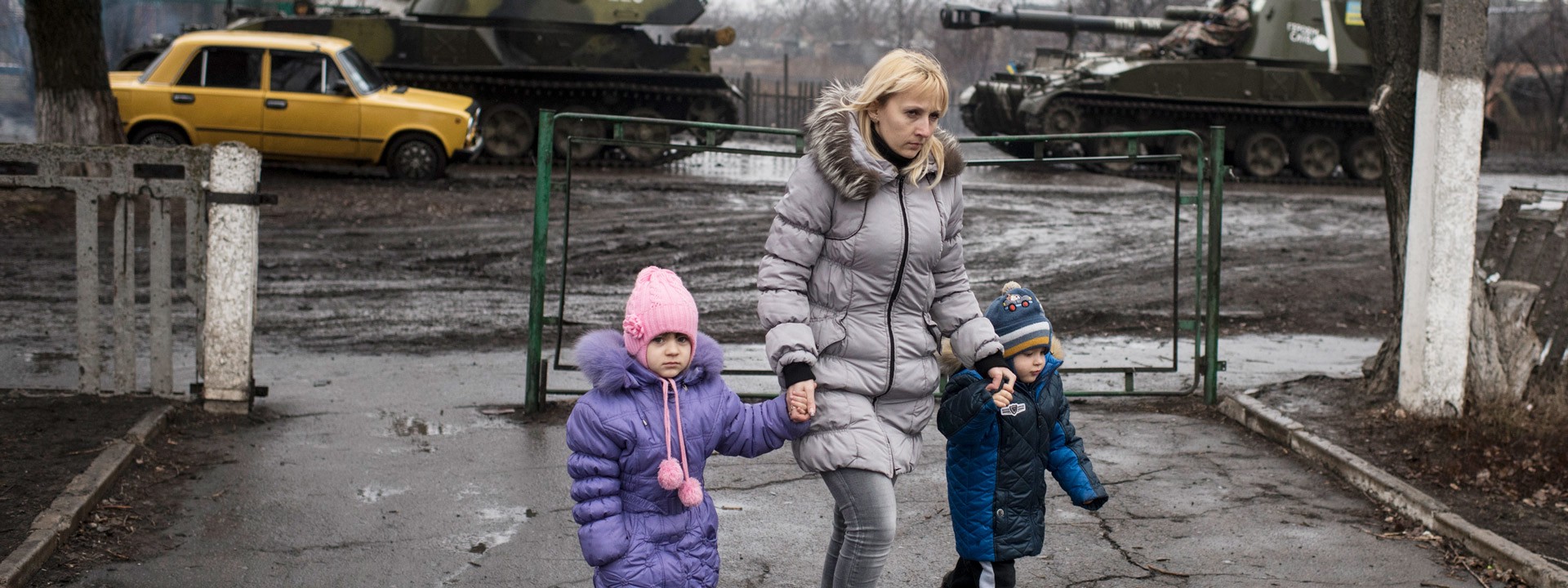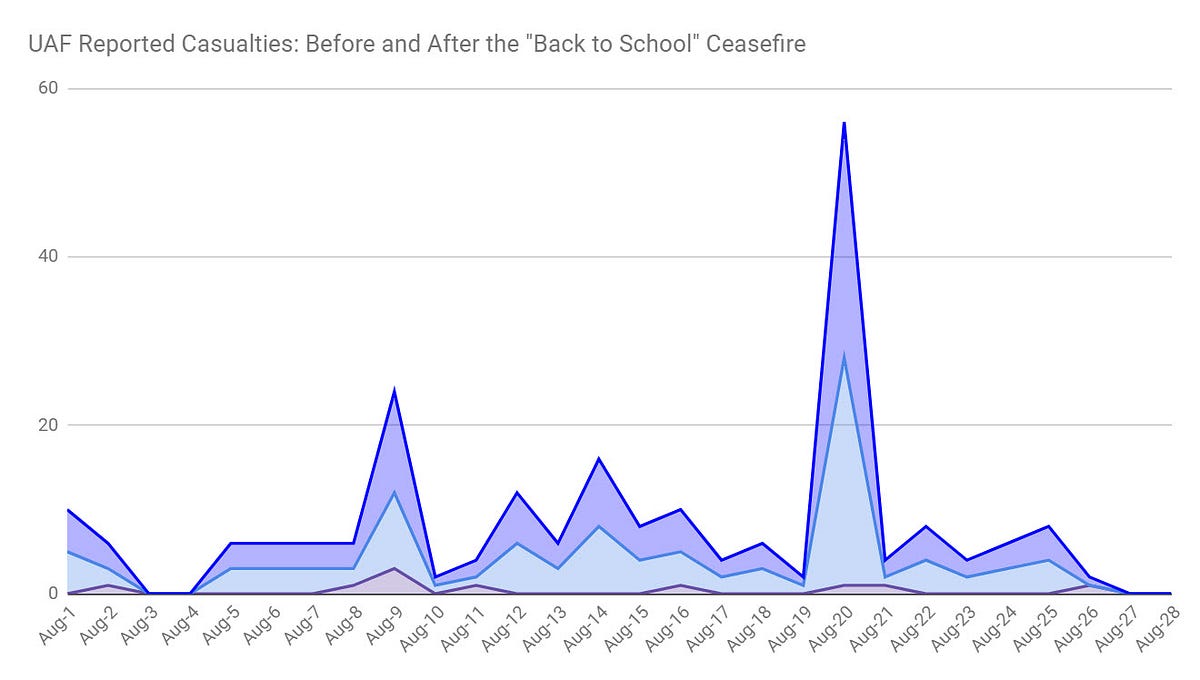Ukraine’s Back to School “Ceasefire”
New promises are made and broken
Ukraine’s Back to School “Ceasefire”

New promises are made and broken in the lastest ceasefire in eastern Ukraine

Ukraine’s new back to school ceasefire was set to begin at midnight on August 25. However, opposing sides accused each other of violating the ceasefire minutes after it “started.” This is the third ceasefire to mark children’s return to school the three years of conflict in eastern Ukraine, with each prior ceasefire garnering limited or no success.
#Ukraine: Sides commit to ceasefire on occasion of beginning of new school year – statement by @AUT_OSCE Rep Sajdik https://t.co/SQ3S3fenM7
— OSCE (@OSCE) August 23, 2017
Russian press reported one civilian injury in non-government-controlled Donetsk city in the early morning of August 25, the first day of the ceasefire. The Ukrainian Press Center of the Anti-Terrorist Operation (ATO) stated Ukrainian forces did not return fire in Talakivka or Zaitseve in order to respect the ceasefire, but also reported an increase in fighting, though notably without artillery or mortar fire.
https://www.facebook.com/ato.news/posts/1674670079210458
After a phone meeting under the Normandy Quartet Format between Ukrainian President Petro Poroshenko, Russian President Vladimir Putin, German Chancellor Angela Merkel, and French President Emmanuel Macron on August 22, the parties to the conflict in eastern Ukraine announced a “back to school” ceasefire to allow children to safely attend schools in eastern Ukraine.
https://www.facebook.com/oscesmm/videos/877447002407006/
The Organization for Security and Co-operation in Europe (OSCE) Special Monitoring Mission (SMM) to Ukraine recorded numerous ceasefire violations along the line of contact within the first hour of the new ceasefire period. In a press briefing, Principal Deputy Chief Monitor Alexander Hug reported the use of heavy weapons banned by the Minsk Agreements in the first day of the supposed ceasefire. He reiterated the danger for major infrastructural damage and threat to civilian lives heavy weapons hold. As reflected in the charts below, there have been continuous ceasefire violations (explosions) throughout the harvest ceasefire, which was “complete cessation of fire along the entire line of contact” from June 24 through August 31 to allow for a safe and secure summer harvest. At the beginning of the ceasefire, there was a temporary drop in ceasefire violations, but fighting increased again only a few days later.




As with previous ceasefires, this call for a back to school ceasefire received overwhelming support from the international community. United States Special Envoy to Ukraine Ambassador Kurt Volker praised the announcement by expressing full support. Officials from the OSCE were overwhelmingly supportive for the back to school ceasefire and reminded the sides to allow the OSCE SMM to Ukraine “safe and unhindered access across the conflict area.” OSCE officials also referred to the ceasefire as an opportunity for the sides to impose disciplinary measures on parties who violate agreements and work with the Joint Centre for Control and Co-ordination (JCCC) to undertake the “long-overdue” clearance of remaining mines.
Unfortunately, political support has yet to bring about a cessation in fighting.
As @DFRLab reported, the 2017 Easter and harvest ceasefires provided minimal effect on the amount of ceasefire violations along the line of contact in eastern Ukraine. The harvest ceasefire that has yet to see success is technically still in effect through August 31, overlapping with the new back to school ceasefire.
Schools are frequently caught in the crossfire, and have suffered severe damage after some shelling incidents. Unexploded ordnances from heavy weapons banned by the Minsk Agreements also pose serious hazards to civilians, as seen in cases of children unknowingly picking up unexploded shells. While there are relatively lower numbers of ceasefire violations, the fighting continues, endangering school children and other civilians along the line of contact.
Follow the latest Minsk II violations via the @DFRLab’s #MinskMonitor.

